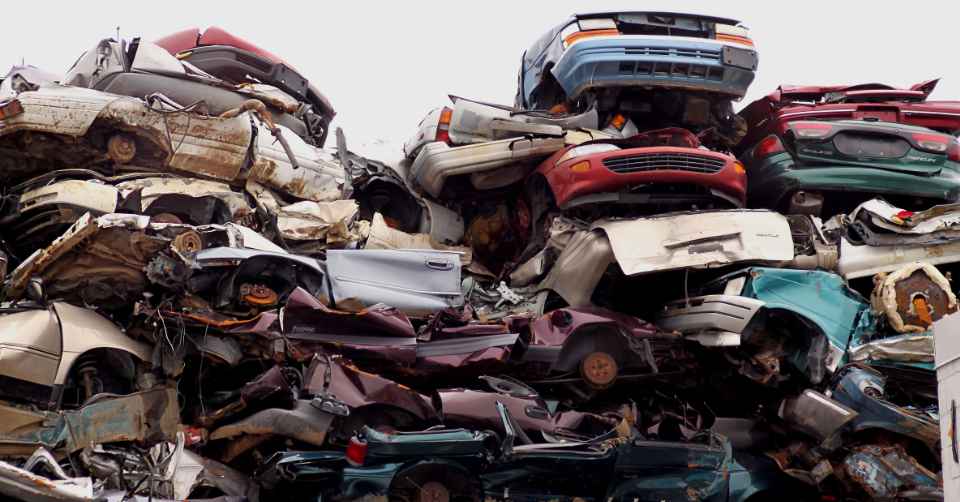
Even when there are no injuries, the aftermath of a car accident can be stressful. Realizing your vehicle is a total loss on top of it all might seem overwhelming. Here are the answers to some questions you might be asking after your car has been declared a total loss.
The terms “write off,” “total loss,” and “totaled car” have the same meaning in the insurance world — your car is either damaged beyond repair, or the cost to repair the damage would be greater than the value of your vehicle.
The short answer is yes — your insurance policy will cover your damages, including a total loss, when the cause of the loss is covered under your policy. Generally speaking, a car insurance policy with collision and comprehensive coverage will provide coverage for a wide variety of scenarios, such as traffic accidents, collisions with animals, and non-collision events like theft, fallen trees, or weather damage. Any of these situations could result in a total loss, in which case your policy would cover the value of your car. If you have coverage for transportation replacement, your insurance will also cover the cost of rental vehicle.
There are some scenarios where your car insurance policy might not provide coverage. The circumstances of the accident might breach policy terms, such as driving while impaired, for example. And if you only have collision coverage, you won’t be covered for damage caused by events like weather or vandalism, which typically require comprehensive or all-perils coverage. Every policy is unique and has its own limits and terms, so be sure to review your own policy documents and ask your broker if you have any questions about your coverage.
There are two common calculations used to determine the amount you will get for your vehicle in the event of a total loss. Replacement cost only applies if you have purchased a depreciation waiver endorsement (typically only available on brand new vehicles for a limited time). You’ll be covered for the lower amount of the manufacturer’s suggested retail price (MSRP) or the original purchase price, depending on the terms of your waiver. Otherwise, you’ll receive the actual cash value, which factors in depreciation. Depreciation varies, but generally speaking, your insurer will review the market value in your area for similar vehicles and base your claim payout on your vehicle’s age, mileage, and wear and tear.
Whether you lease, finance, or own your car, the claims process is similar. If you lease your car, your insurer will settle the loss with the owner of the vehicle: the leasing company. You may owe more to a leasing or financing company than the actual value of your car. If that’s the case, you’re still required to pay the difference between the settlement and what you owe. As previously mentioned, a depreciation waiver can help offset this, although there are situations — if the manufacturer’s suggested retail price is lower than your purchase price, or the cost of borrowing is high, for example — where you may still have a shortfall. You are still responsible for paying the amount owed, even though you no longer have use of the vehicle.
If you believe your claim payout seems lower than it should be, it’s a good idea to do your own research of the marketplace to get a realistic idea of the value of similar vehicles (make and model, age, mileage). If you’ve done so and still believe the settlement amount is unfair, the first course of action is to speak to your adjuster. Make sure there is no misunderstanding of the calculation before you escalate the issue. If you’re still not satisfied, your adjuster will provide you information about the dispute process available to you under the Insurance Act.
When your vehicle has been declared a total loss, your insurance company will pay your claim settlement amount directly to you. This is also the case if your car is financed, but the finance company is also named on the cheque (co-payable). If you lease your vehicle, the leasing company will receive the co-payable cheque directly, and they will give you the difference if the settlement is more than you currently owe.
You’re responsible for finding and purchasing a new vehicle yourself. The price you pay for the replacement vehicle, whether it’s more or less than your settlement, is up to you as well. Keep in mind that current supply chain disruption issues may affect the cost and timing of getting a new vehicle. If you decide to purchase a used car instead, consider the factors that may affect your car insurance. Some vehicle modifications, for example, may not be eligible for coverage. Talk to your broker before you make your purchase to find out if there are insurance implications.
The length of time between filing your claim and receiving a settlement for your vehicle will vary depending on your insurer and the circumstances of your claim, but generally speaking, a straightforward claim can typically be settled in two or three weeks.
Possibly, but this depends largely on whether you were at fault for the collision. There are several reasons why your car insurance costs may increase, and involvement in an at-fault collision is one of them. Many insurance companies include accident forgiveness in their policies, which may protect you from a rate increase after your first at-fault accident. If you’re not at fault, the claim likely won’t affect your premium.
If it’s been a while since you’ve reviewed your car insurance coverage, it’s a good idea to review your policy with your broker to make sure you have the coverage you need to protect you in the event of a total loss. If you’re in an accident and your car is damaged or totaled, be sure to file your claim as soon as possible.
Learn more about auto insurance options from Whitley Newman